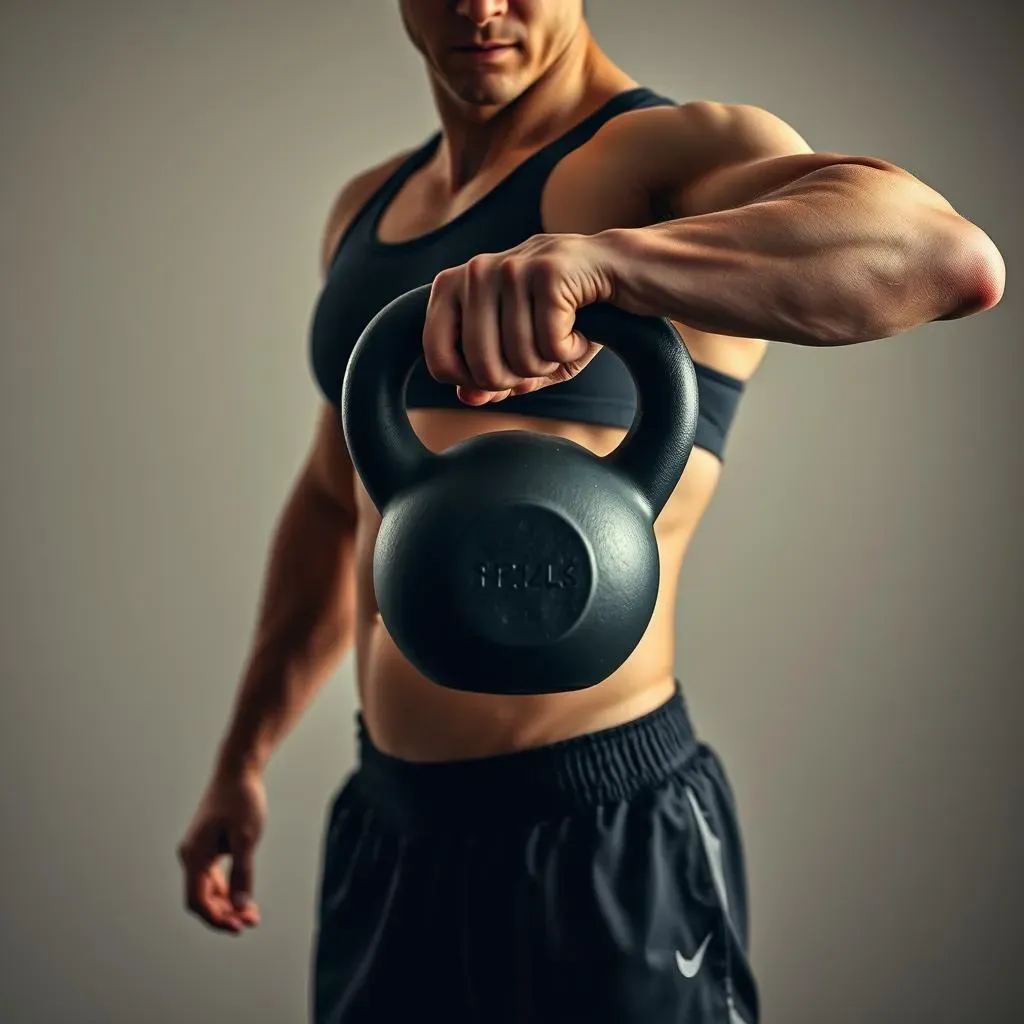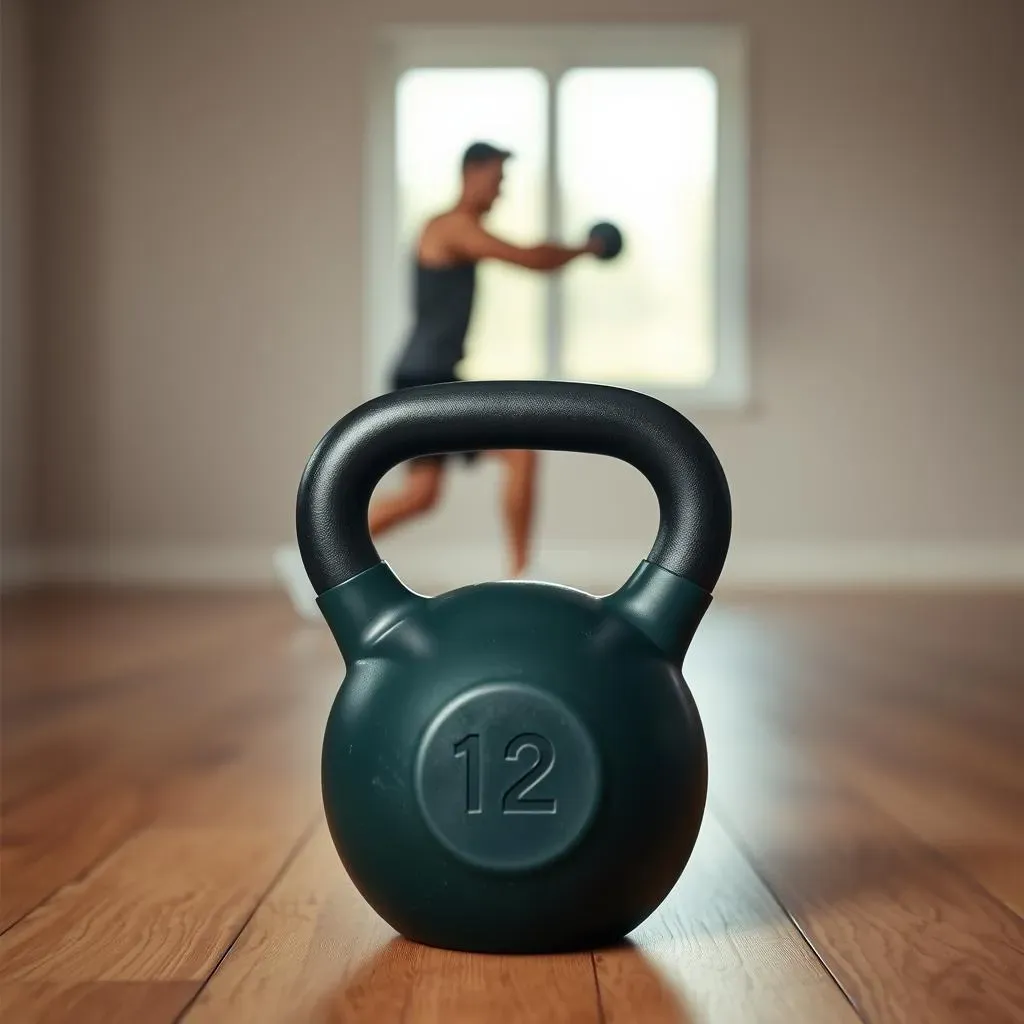Table of Contents
Ready to unleash your inner strength and sculpt a fitter you? This guide is your passport to the world of kettlebell training, specifically designed for beginners. We'll explore "free kettlebell workouts for beginners," providing everything you need to get started on your fitness journey, without breaking the bank or your back! First, we'll cover the essentials: selecting the right kettlebell and perfecting your form to avoid injury. Then, we'll dive into a fantastic beginner workout routine, building a strong foundation of full-body exercises. Don't worry if you're a complete novice – we'll make sure you feel confident and capable. Once you've mastered the basics, we'll level up with intermediate exercises and progressions to keep your workouts challenging and exciting. Finally, we'll share valuable tips and resources to help you stay motivated and continue your progress long term. Get ready to experience the power and versatility of kettlebell training – your stronger, healthier self awaits!
Getting Started: Choosing Your Kettlebell and Mastering Proper Form

Getting Started: Choosing Your Kettlebell and Mastering Proper Form
Choosing the Right Kettlebell
So, you're ready to give kettlebells a try? Awesome! But before you even think about swinging that thing around like a pro (which, let's be honest, will take some time), you need to pick the right kettlebell. Think of it like choosing the right bike – you wouldn't start with a mountain bike if you're just cruising around the block, right? For beginners, a lighter kettlebell is your best friend. We're talking 8-12kg for women and 12-16kg for men, but it really depends on your current fitness level. Too heavy, and you'll risk injuring yourself; too light, and you won't get a good workout. Don't be afraid to start light and gradually increase the weight as you get stronger. Remember, consistency is key! And if you're unsure, it's always better to err on the side of caution. You can always upgrade later. Check out our guide on best beginner kettlebell workouts for more advice!
There are a few different types of kettlebells out there, including vinyl-coated, cast iron, and competition kettlebells. For beginners, a vinyl-coated kettlebell might be a good option, as they're generally more affordable and gentler on your floors. But cast iron kettlebells are more durable and offer a more traditional feel. Think of it like choosing between a comfy couch and a sturdy oak chair – both have their place! The most important thing is to choose a kettlebell that feels comfortable in your hand and that you're confident you can control. Don't let fancy marketing talk you into something that's not right for you. Your comfort and safety come first. Need a full-body workout? Consider this full body kettlebell workout for beginners.
Kettlebell Type | Pros | Cons |
|---|---|---|
Vinyl-coated | Affordable, floor-friendly | Less durable |
Cast iron | Durable, traditional feel | Can be more expensive, heavier |
Mastering Proper Form: The Foundation of Success
Okay, you've got your kettlebell. Now what? Before you start swinging it around like a crazy person (again, please don't!), it's crucial to learn proper form. This isn't just about aesthetics; it's about preventing injuries and getting the most out of your workout. Think of it like learning to ride a bike – you wouldn't just jump on and start pedaling without learning how to balance, would you? Proper form is your balance in the world of kettlebell training. Start with the basics: learn how to hold the kettlebell correctly, how to maintain a neutral spine, and how to engage your core. There are tons of free videos online that can show you exactly how to do this (and we'll link to some good ones too!). Don't rush it; take your time, and focus on perfecting your technique before you increase the weight or complexity of your exercises. A few well-executed reps are far better than many sloppy ones. And trust me, your body will thank you for it later.
One of the most common mistakes beginners make is rounding their back during exercises like kettlebell swings. This puts a lot of strain on your spine and can lead to serious injury. So pay close attention to your posture! Keep your back straight, your core engaged, and your movements controlled. If you're struggling with form, don't hesitate to ask for help from a qualified trainer or watch some instructional videos. We have a beginner's program that can help you out. Check out our beginner kettlebell program for a step-by-step guide. Remember, mastering proper form is an investment in your long-term fitness success. It's not just about getting stronger; it's about doing so safely and effectively.
- Watch instructional videos
- Start with lighter weights
- Focus on controlled movements
- Engage your core
- Maintain a neutral spine
Beginner Kettlebell Workout Routine: A FullBody Blast

Beginner Kettlebell Workout Routine: A FullBody Blast
Warm-up and Getting Started
Alright, champ, let's get this party started! Before we jump into the main workout, we need to warm up those muscles. Think of it as prepping your engine before a race – you wouldn't just floor it without a warm-up, would you? A good warm-up gets your blood flowing and prepares your body for the workout ahead, reducing the risk of injury. We're talking 5-10 minutes of light cardio, like jumping jacks or high knees, followed by some dynamic stretches, such as arm circles, leg swings, and torso twists. Don't skip this crucial step! Your body will thank you for it. Remember, a proper warm-up is just as important as the workout itself. Need some ideas for a killer warm-up? Check out this 20-minute beginner kettlebell workout for a complete routine.
Now, let's talk about the workout itself. We're going to focus on compound exercises – movements that work multiple muscle groups simultaneously. This is the most efficient way to build strength and endurance, and it's perfect for beginners. We'll be doing a circuit, which means you'll perform each exercise for a set number of repetitions before moving on to the next. Rest for 60 seconds between circuits. Remember to focus on proper form over speed – quality over quantity! Aim for controlled movements and good posture throughout the entire workout. If you're feeling any pain, stop immediately and adjust your form or weight. Safety first!
- Jumping Jacks
- High Knees
- Arm Circles
- Leg Swings
- Torso Twists
The Workout: A Full-Body Kettlebell Circuit
Here’s a sample workout, remember to adjust the weight and reps based on your fitness level. Always listen to your body and stop if you feel pain. This is a sample workout, and you can adjust it to fit your needs and preferences. If you're struggling with a particular exercise, don't hesitate to modify it or take a break. Remember, consistency is key, and even a short workout is better than no workout at all. Need a more focused leg workout? Check out our beginner kettlebell leg workout.
Remember to breathe deeply throughout each exercise, and maintain good posture. Don't rush through the movements – focus on controlled, deliberate actions. And most importantly, have fun! Kettlebell training should be enjoyable, and if you're not having fun, you're less likely to stick with it. Remember that consistency is more important than intensity. Aim for at least three workouts per week, and gradually increase the intensity as you get stronger. You got this!
Exercise | Sets | Reps | Rest |
|---|---|---|---|
Goblet Squats | 3 | 10-12 | 60 seconds |
Kettlebell Swings | 3 | 15-20 | 60 seconds |
Kettlebell Rows | 3 | 10-12 per side | 60 seconds |
Overhead Press | 3 | 8-10 | 60 seconds |
Building Your Strength: Intermediate Kettlebell Exercises and Progressions

Building Your Strength: Intermediate Kettlebell Exercises and Progressions
Level Up Your Kettlebell Game
So you've conquered the beginner workouts? Fantastic! Now it's time to challenge yourself with some intermediate exercises. Think of this as the next level in a video game – more challenging, more rewarding, and a whole lot more fun! We're going to introduce some new movements that will really test your strength, balance, and coordination. Don't worry if you don't nail them right away; mastering these moves takes time and practice. Just focus on maintaining proper form and gradually increasing the difficulty as you get stronger. Remember, consistency is key. And if you are looking for a more comprehensive guide, check out our comprehensive guide for male beginners or our guide for female beginners over 50.
Some great intermediate exercises to add to your routine include Turkish get-ups, kettlebell snatches, and clean and jerks. These exercises are more complex than the beginner moves, so take your time learning the proper technique. Watch plenty of instructional videos, and don't be afraid to start with a lighter weight than you might think. Remember, proper form is more important than lifting heavy. Focus on control and precision, and gradually increase the weight as you gain strength and confidence. You'll be amazed at how much stronger you become!
- Turkish Get-Ups
- Kettlebell Snatches
- Clean and Jerks
- Goblet Lunges
Programming Your Intermediate Kettlebell Workouts
Now that you're tackling more challenging exercises, it's time to think about how you structure your workouts. A well-structured program will help you maximize your results and avoid plateaus. One popular approach is to use a full-body workout three times a week, focusing on different muscle groups each session. Another approach is to split your workouts, focusing on upper body one day and lower body the next. This allows for more focused training and can be particularly helpful if you're aiming for specific strength gains in certain areas. Remember to incorporate rest days into your routine to allow your muscles to recover and rebuild. Overtraining is a real thing, and it can hinder your progress. Listen to your body, and don't be afraid to take a rest day when you need one. Consider using a 4-week kettlebell program to structure your training.
Don't forget the importance of progressive overload! This simply means gradually increasing the weight, reps, or sets you lift over time. This is how you continue to challenge your muscles and make progress. Start by adding a small amount of weight or a few extra reps each week. As you get stronger, you can increase the intensity more significantly. Remember, consistency is key to seeing results, but progressive overload is what keeps you progressing. If you find yourself stuck in a rut, don't be afraid to switch up your routine, try new exercises, or experiment with different training styles. Keep your workouts fun and challenging, and you'll stay motivated to continue your fitness journey.
Training Split | Pros | Cons |
|---|---|---|
Full Body (3x/week) | Efficient, good for beginners | Can be tiring |
Upper/Lower Split | Allows for more focused training | Requires more time commitment |
Beyond the Basics: Kettlebell Training Tips for Continued Success and Resources

Beyond the Basics: Kettlebell Training Tips for Continued Success and Resources
Nutrition and Recovery: Fueling Your Fitness Journey
Okay, so you're crushing those kettlebell workouts – high five! But to truly maximize your results, you need to fuel your body properly. Think of your body like a high-performance car – you wouldn't put regular gas in a Ferrari, would you? Proper nutrition is essential for muscle growth, recovery, and overall well-being. Focus on a balanced diet rich in protein, complex carbohydrates, and healthy fats. Protein helps repair and build muscle tissue, while carbs provide energy for your workouts. Healthy fats support hormone production and overall health. Don't be afraid to experiment with different foods and find what works best for your body. And remember, hydration is key! Drink plenty of water throughout the day, especially before, during, and after your workouts.
Just as important as fueling your body is giving it adequate rest. Your muscles need time to recover and rebuild after your workouts. Aim for at least 7-8 hours of sleep per night, and don't hesitate to take rest days when needed. Overtraining can lead to injuries and hinder your progress. Listen to your body; it's your best guide. Incorporate active recovery methods like light walks or yoga on your rest days to promote blood flow and reduce muscle soreness. Remember, recovery is just as important as the workouts themselves. It's all part of the equation for long-term success. Need a plan to get you started? Check out our beginner kettlebell program for a structured approach.
- Prioritize protein intake
- Consume complex carbohydrates
- Include healthy fats
- Stay hydrated
- Get enough sleep
- Incorporate active recovery
Tracking Your Progress and Staying Motivated: The Long Game
So you're consistently working out, fueling your body right, and resting well. Awesome! But how do you know if you're actually making progress? Tracking your progress is crucial for staying motivated and making adjustments to your training plan. There are many ways to track your progress, from simply noting down the weight you lift and the reps you perform to using fitness trackers or apps. Find a method that works for you and stick with it. Seeing your progress visually can be incredibly motivating. It's a reminder of how far you've come and an incentive to keep pushing forward. Don't just focus on the numbers; pay attention to how you feel. Are you stronger? Do you have more energy? Do your clothes fit better? These are all important indicators of progress.
Staying motivated can be tough, especially when you're not seeing immediate results. But remember that consistency is key. Find a workout buddy, join a fitness community, or set realistic goals for yourself. Celebrate your small wins and don't get discouraged by setbacks. Everyone experiences plateaus from time to time. If you're struggling to stay motivated, try setting new goals, trying new exercises, or finding a workout buddy to keep you accountable. Remember why you started this journey in the first place, and keep your eye on the prize. Want a plan to help you stay on track? Check out our 4-week kettlebell program for a structured approach.
Tracking Method | Pros | Cons |
|---|---|---|
Journaling | Simple, free | Can be time-consuming |
Fitness Tracker | Provides detailed data | Can be expensive |
Fitness App | Offers structured programs and community support | May require a subscription |
Community and Resources: Your Support Network
You don't have to go it alone on your fitness journey! Connecting with others who share your goals can provide invaluable support and motivation. Join online fitness communities, find a workout buddy, or even just talk to friends and family about your progress. Sharing your experiences and celebrating your successes with others can make a huge difference in your journey. Remember, fitness is a journey, not a race. There will be ups and downs along the way, but having a support network can help you stay on track when things get tough. Don't be afraid to ask for help or advice when needed. There's a whole community out there ready to support you.
Finally, remember that there's a wealth of resources available to help you on your fitness journey. From online workout videos and articles to qualified personal trainers and nutritionists, there's no shortage of support available. Don't be afraid to seek out professional guidance if needed. A qualified trainer can help you perfect your form, create a personalized workout plan, and provide motivation and accountability. A registered dietitian can help you create a balanced nutrition plan to support your fitness goals. Remember, investing in your health and well-being is an investment in yourself. So don't hesitate to seek out the support you need to reach your full potential. Check out our beginner kettlebell program for more support and guidance.
- Join online fitness communities
- Find a workout buddy
- Seek professional guidance (trainer, dietitian)
- Utilize online resources